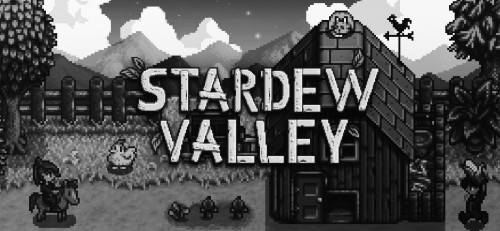 STARDEW VALLEY PROVIDES an involved farming game with clean gameplay, a spin on a childhood classic. The game is a must-buy.
STARDEW VALLEY PROVIDES an involved farming game with clean gameplay, a spin on a childhood classic. The game is a must-buy.Coming into college, I haven’t had as much time for videogames as I once did. Nowadays, I’m borrowing a roommate’s PS4 to play a new game they bought or some mobile game that I can play for downtime between—and sometimes during—classes. However, that’s not to say I don’t miss the type of games I used to play. My DS Lite with Harvest Moon DS sits sadly on my desk, waiting for me to pick it up. But, as a busy college student, I don’t feel as though I can invest the time in these types of games that I could when I was younger. So, as one might have already guessed, I was hit with a good wave of nostalgia when I got my hands on Stardew Valley.
So, what is Stardew Valley? It’s a PC game in a similar vein to Harvest Moon, where your character inherits a ramshackle farm, and you must make the farm successful while also integrating yourself into the local community. This second bit might be the most fulfilling part of the game—becoming friends with villagers, fixing up the local community center (or turning it into a Jojo Mart warehouse), and making a family are just a few of the non-farming activities one can partake in. The game works on a time-based system, with each day taking roughly 10 real time minutes and with 28 days in each of the four seasons. These days aren’t all wasted work days; there are birthdays and events that take place on certain days, and villagers have weekly schedules that can also vary with the weather.
So, as far as I’ve written, I’ve described Stardew Valley as a Harvest Moon clone, which, honestly, it kind of is. However, that’s not necessarily a bad thing. The game’s creator understood the strong and weak points of those games and used those to his advantage. The fishing system is now a much less tedious, skill-based mini game. The time curve in many aspects is much kinder in Stardew Valley, allowing you to automate your farm through sprinklers and feeders much faster than any Harvest Moon game I’ve played. Additionally, the ability to craft and place items wherever you’d like allows for more personalized farms that can better cater to the player’s style. For example, I focused on making artisanal goods like wine and cheese for income while my friend would invest in maximizing their farming, which the new level/perk system helps with in promoting diversity in play.
I mentioned the game’s creator before, but I should actually describe him as the sole creator. One man, Eric Barone, created the game that captured the best aspects of Harvest Moon that the newer titles haven’t captured well—for example, having clear regimented goals. In Stardew Valley, there is a clear list of items to acquire to improve your farm and fix the community center, with quests to unlock areas around the town, which stands in contrast to the obfuscated method of blind play—provided you don’t use a walkthrough—present in Harvest Moon. And as I mentioned before, Stardew Valley is much kinder to your patience and time. While it certainly makes the game easier that your buildings can’t be destroyed and your animals can’t be killed, I think that’s a fair alternative to Harvest Moon, where it could take a whole in-game year to replace your barn and get your friendship levels with your animals to the same level. I don’t want to seem like a lazy so-and-so, but wasting about 18 hours to get to the same point I was at before just doesn’t appeal to me.
But I think the best part of Stardew Valley is being able to talk about my farm and strategies with friends who also own it. This promotes a real life social aspect to the game that I was never able to get out of Harvest Moon growing up—which, to be fair, was not the fault of the game. But with a cooperative addition to Stardew Valley coming soon, this will create a larger gap in the differences between the two games. For only $15, I got an incredibly entertaining game that not only sated my nostalgia, but also my gaming bug. Even my friends that had not played Harvest Moon before love the game, telling me that Stardew Valley stands on its own as a good experience and not just an attempt at being a hollow copy of a childhood classic. With tuned and tight gameplay, which can be played in a realistic and rewarding time frame, Stardew Valley is a must-buy for those looking for a relaxing, casual experience—but be prepared for the struggle of saying, “maybe I’ll just go for one more day.”
